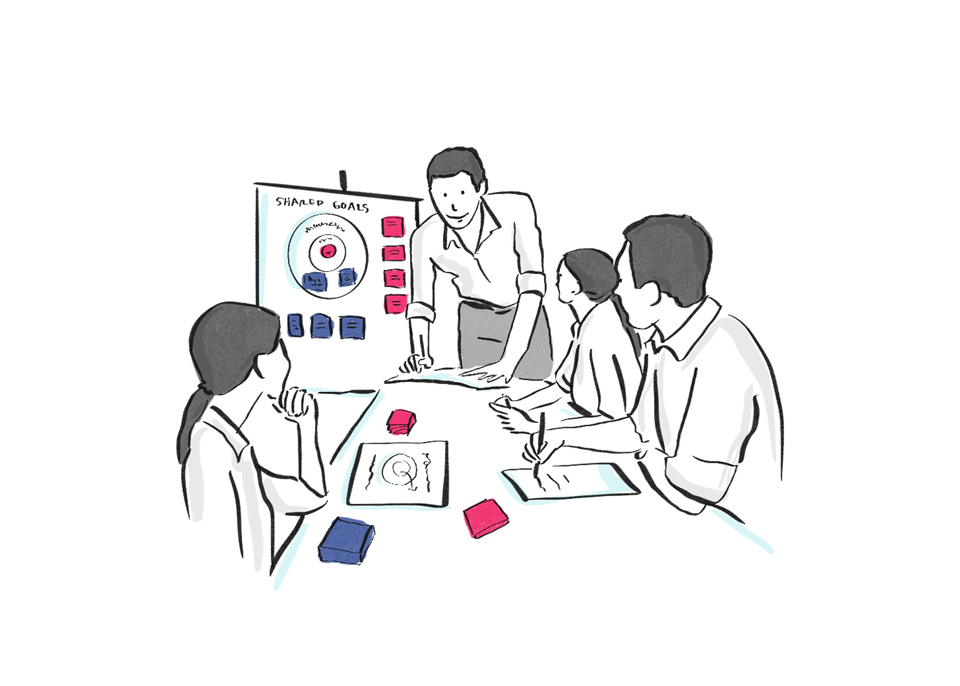Seeing Things Through The Boss’s Lens
The boss-employee stereotypes are boundless, a source of satire with a sliver of truth. Look no further than the comics in your morning daily – the agony of Dilbert, forever at odds with his relentless pointy-haired boss, or the restful Beetle Bailey pitted against the restless Sarge – these capture the essence of extreme manager-employee antagonism. But those relationships exist for more than just laughs. The comics are drawing out the easy target of the seemingly myopic drive of management, pitted against the humanity of the humble worker. But it isn’t so straightforward. In last week’s post, we talked about the employee engagement challenge from the “human” employee perspective. But we also hinted at the Venn Diagram that joins common issues held by both employees and management. Because, as we’ll see, most of the things we listed as important for employees are also beneficial to management.
The myths around management
There are two notions to dispel about management to get us closer to the Venn Diagram of shared goals. First, management is comprised of human beings too. You might laugh, but it is easy to forget that management, from bosses to board members, is made up of people. So, while it might act as a single unit most times, and while it might appear to be disconnected in contrast to the individual employees, there are human faces behind the management unit and its policies. Second, numbers work in mysterious ways. Management might look to be performance-driven, but they want employees to be happy too. Studies, such as this one from Harvard Business Review, report that engaged employees are more productive and are likely to stay with a company longer. Engaged employees contribute to a better, more comfortable work environment, which in turn can yield a positive multiplier to engage other employees. Contribution and employee retention are both proxies for costs that can pile up if not attended to. While it might seem beneficial to keep pushing employees to produce, to meet quotas or complete projects, the aggregate effect is disgruntled employees who put in bare minimum just to tick boxes – not real, meaningful work. The numbers get met, but only for so long before burnout hits hard. High turnover of employees is costly to management, who would then need to take the time and resources to evaluate the role, post for a new hire, conduct interviews, make a choice (hopefully the right one), and then train the new person over a series of months. And let’s imagine that, after just a year, that new employee leaves as well. Back to square one! This is not ideal. Management wants to work hard to avoid both these outcomes: burnout and turnover. The best way to do that? Invest in employee engagement.
Finding common ground
In a bit of a roundabout way, we can conclude that the management side of employee engagement is more similar to the employee side than you’d first expect. They want the same thing. And even despite this clarity, the two sides can talk past each other, especially when it comes to solutions. The range of solutions available can represent an extension of the employee-management dichotomy. Some ideas might be more readily available to employees, while other solutions will seem obvious to management. And not everyone will agree on what’s best. While it could be easy for management to take a my-way-or-the-high-way attitude – “I’m in charge, so do what I say” – and this can be the perception, or fear, of employees, solutions can and should be more diverse. But they start with communication. Good solutions also start by using the right framework, focusing on the shared goals rather than the disparity of resources or difference in position. A good icebreaker can tease out some of the commonalities and break down these barriers, but it takes a good plan to ensure they move forward. Next post, we’ll introduce our quick wins and exactly how they ensure employees and management are in harmony.
To read more about improving Employee Engagement, click here,or to explore ways we can help your company with Employee Engagement, contact us here.



